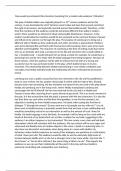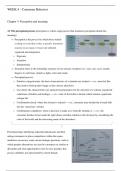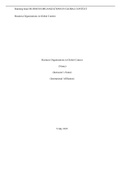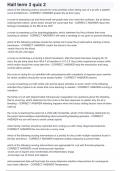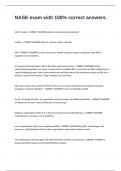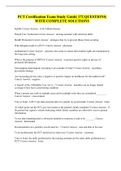Microbiology: A Systems Approach Ch. 1, 2.2, 3 (Cowan, 4th ed.)
1. microbiology: specialized area of biology that deals w/living things ordinarily
too small to be seen without magnification
2. microorganisms: microbes or microscopic organisms
3. microbes: bacteria, algae, protozoa, helminths, fungi
4. viruses: protein coated genetic elements, noncellular, parasitic and dependent
on their infected host
5. 3 cell types: bacteria, eukaryotes, archaea
6. basic structures of bacteria: bacillus, coccus, spiral
7. protozoans: diverse group of single-cell eukaryotic organisms
8. eukaryote: complex single celled organism which arose from organisms that
existed 3.5 billion years ago. 10x larger than archaea and bacteria
eukaryotic cells have membrane-bound organelles and nucleus. Only plants,
algae, & fungi have cell walls (protozoan & animal cells do not)
9. prokaryote: bacteria and archaea have no true nucleus - prenucleus -
10. ancestral cell evolution: began approx 3.5 billion years ago and evolved
into eukaryotes, archaea, bacteria
11. evolution: the accumulation of changes that occur in organisms as they
adapt to their environments
12. photosynthesis: light fueled conversion of carbon dioxide to organic
material, forms oxygen - oxygenic photosynthesis - bacteria and algae provide
70% of earth's photosynthesis
13. anoxygenic photosynthesis: photosynthesis that doesn't produce oxygen -
precursor to oxygenic photosynthesis
14. decomposition: breakdown of dead matter and wastes into simple
compounds and directed back to natural cycles of living things
15. genetic engineering: area of biotech that manipulates genetics of plants,
microbes, animals to create new products - GMOs
16. recombinant DNA technology: transfer genetic material from one
organisms to another to alter DNA
17. bioremediation: introduction of microbes into the environment to restore
stability/clean toxic pollutants
18. organelles: small double membrane bound structures in the eukaryotic cell,
performs specific functions and include a nucleus, mitochondria, chlorplasts
19. bacteria: microorganism smaller than eukarya, lack nucleus & organelles,
but have cell walls containing peptidoglycan, protein, polysaccharides and lipids
20. archaea: microorganism smaller than eukarya, lack nucleus & organelles, &
have cell walls containing protein, polysaccharides and lipids (no peptidoglycan)
, 21. taxonomy: the science of classification of biological species, used to
organize all of the forms of modern and extinct life.
biological classification, in part reflects our understanding of evolution; thus, as
technological advances enhance and change our understanding of evolutionary
schemes and biological relationships, our classification methods may also change
(e.g. lateral web-based vs. linear/generational tree-based phylogeny).
-tool to study microbes-
22. Robert Hooke: first described & kept records of microorganisms, such as
mold species growing on a leather surface, seen through his early homemade
microscope in the 1660s. (Also coined the word "cell".)
23. Antonie van Leewenhoek: in the 1600's used an even more powerful [than
Hooke's] self-made microscope (300X!) to observe & describe "animalcules"
(single-celled organisms including bacteria & protozoa) from surfaces that
included never before cleaned teeth.
24. Francesco Redi: in the late 1660s, demonstrated that maggots aren't formed
from meat, because if it is covered, flies cannot land on it nor lay their eggs on
it.
25. Louis Pasteur: better convinced skeptics in the 1800s that air itself was not
the source of life by culturing sterilized broth in a flask with a long swan-like
curved neck within which gravity would deposit entering air-borne microbes
while still allowing exposure of broth to air.
26. Joseph Lister: introduced aseptic techniques in the 1860s
27. Oliver Holmes Ignaz Semmelweis: observed, independently, that hospitals
could be a great source of infection
28. Robert Koch: in the early 1880s, was the first to definitively demonstrate that
a specific microbe was the cause of a particular disease Bacillus anthracis
causes anthrax. This led to a surge of similar discoveries.
29. germ theory of disease: human diseases could arise from infection.
Determinable - whether an organism was pathogenic and which disease it
caused.
30. archaea: archaeobacteria are more closely related to eukaryotic cells than to
bacterial cells
31. domain: highest level in the hierarchy and can contain many kingdoms
32. kingdom: the second division in the levels of classification (domains are
divided by ______)
33. natural selection: process coined by Charles Darwin stating that all new
species originate from preexisting species and closely related organisms have
1. microbiology: specialized area of biology that deals w/living things ordinarily
too small to be seen without magnification
2. microorganisms: microbes or microscopic organisms
3. microbes: bacteria, algae, protozoa, helminths, fungi
4. viruses: protein coated genetic elements, noncellular, parasitic and dependent
on their infected host
5. 3 cell types: bacteria, eukaryotes, archaea
6. basic structures of bacteria: bacillus, coccus, spiral
7. protozoans: diverse group of single-cell eukaryotic organisms
8. eukaryote: complex single celled organism which arose from organisms that
existed 3.5 billion years ago. 10x larger than archaea and bacteria
eukaryotic cells have membrane-bound organelles and nucleus. Only plants,
algae, & fungi have cell walls (protozoan & animal cells do not)
9. prokaryote: bacteria and archaea have no true nucleus - prenucleus -
10. ancestral cell evolution: began approx 3.5 billion years ago and evolved
into eukaryotes, archaea, bacteria
11. evolution: the accumulation of changes that occur in organisms as they
adapt to their environments
12. photosynthesis: light fueled conversion of carbon dioxide to organic
material, forms oxygen - oxygenic photosynthesis - bacteria and algae provide
70% of earth's photosynthesis
13. anoxygenic photosynthesis: photosynthesis that doesn't produce oxygen -
precursor to oxygenic photosynthesis
14. decomposition: breakdown of dead matter and wastes into simple
compounds and directed back to natural cycles of living things
15. genetic engineering: area of biotech that manipulates genetics of plants,
microbes, animals to create new products - GMOs
16. recombinant DNA technology: transfer genetic material from one
organisms to another to alter DNA
17. bioremediation: introduction of microbes into the environment to restore
stability/clean toxic pollutants
18. organelles: small double membrane bound structures in the eukaryotic cell,
performs specific functions and include a nucleus, mitochondria, chlorplasts
19. bacteria: microorganism smaller than eukarya, lack nucleus & organelles,
but have cell walls containing peptidoglycan, protein, polysaccharides and lipids
20. archaea: microorganism smaller than eukarya, lack nucleus & organelles, &
have cell walls containing protein, polysaccharides and lipids (no peptidoglycan)
, 21. taxonomy: the science of classification of biological species, used to
organize all of the forms of modern and extinct life.
biological classification, in part reflects our understanding of evolution; thus, as
technological advances enhance and change our understanding of evolutionary
schemes and biological relationships, our classification methods may also change
(e.g. lateral web-based vs. linear/generational tree-based phylogeny).
-tool to study microbes-
22. Robert Hooke: first described & kept records of microorganisms, such as
mold species growing on a leather surface, seen through his early homemade
microscope in the 1660s. (Also coined the word "cell".)
23. Antonie van Leewenhoek: in the 1600's used an even more powerful [than
Hooke's] self-made microscope (300X!) to observe & describe "animalcules"
(single-celled organisms including bacteria & protozoa) from surfaces that
included never before cleaned teeth.
24. Francesco Redi: in the late 1660s, demonstrated that maggots aren't formed
from meat, because if it is covered, flies cannot land on it nor lay their eggs on
it.
25. Louis Pasteur: better convinced skeptics in the 1800s that air itself was not
the source of life by culturing sterilized broth in a flask with a long swan-like
curved neck within which gravity would deposit entering air-borne microbes
while still allowing exposure of broth to air.
26. Joseph Lister: introduced aseptic techniques in the 1860s
27. Oliver Holmes Ignaz Semmelweis: observed, independently, that hospitals
could be a great source of infection
28. Robert Koch: in the early 1880s, was the first to definitively demonstrate that
a specific microbe was the cause of a particular disease Bacillus anthracis
causes anthrax. This led to a surge of similar discoveries.
29. germ theory of disease: human diseases could arise from infection.
Determinable - whether an organism was pathogenic and which disease it
caused.
30. archaea: archaeobacteria are more closely related to eukaryotic cells than to
bacterial cells
31. domain: highest level in the hierarchy and can contain many kingdoms
32. kingdom: the second division in the levels of classification (domains are
divided by ______)
33. natural selection: process coined by Charles Darwin stating that all new
species originate from preexisting species and closely related organisms have


